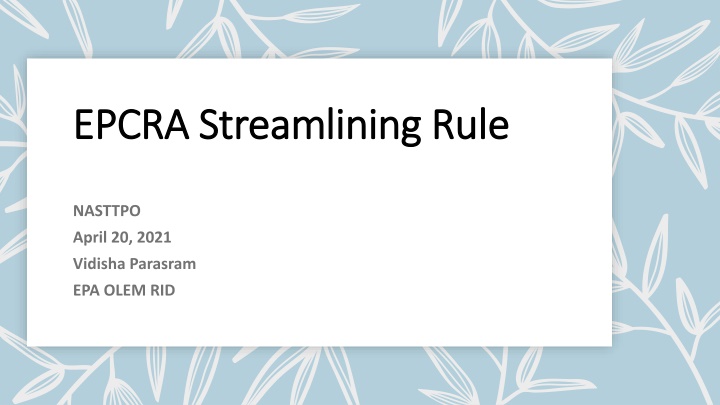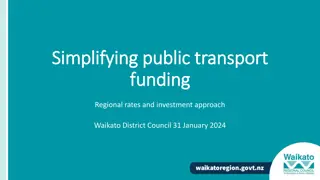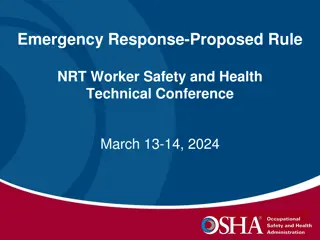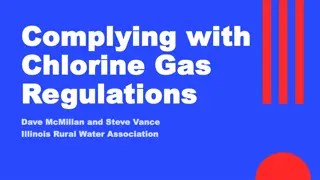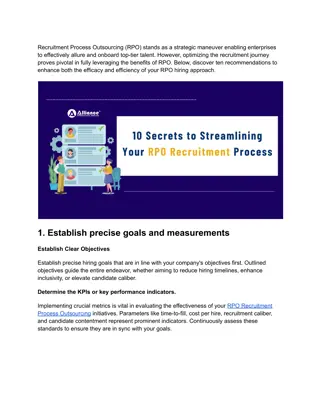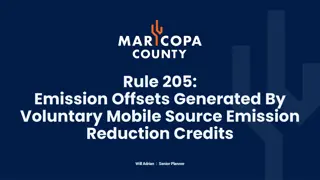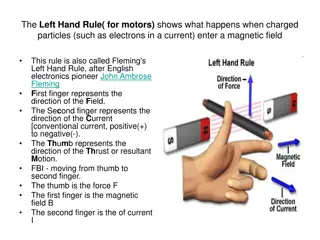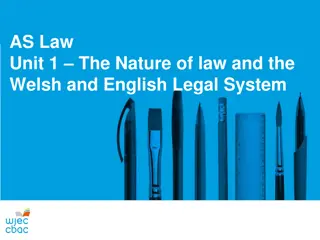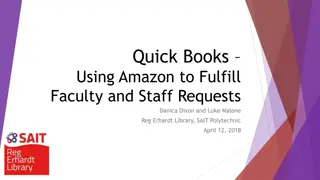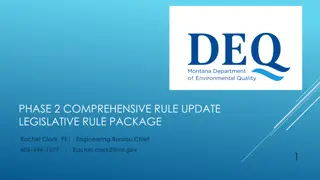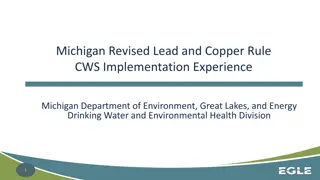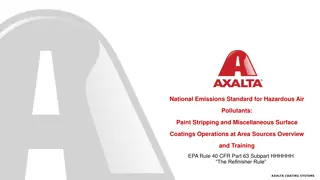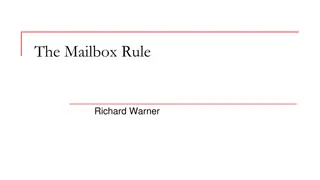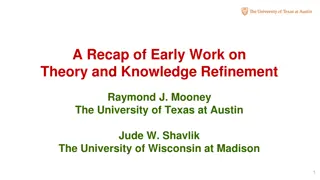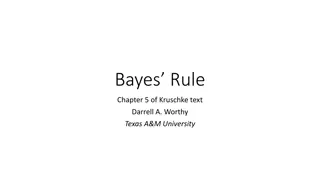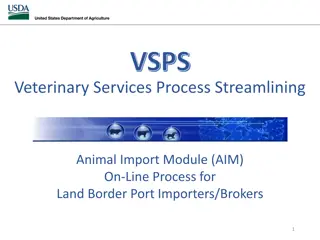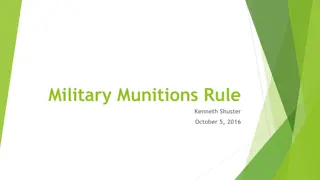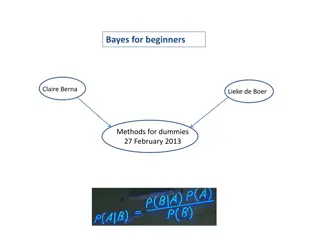EPCRA Streamlining Rule Overview
November 3, 2008, to July 2010 finalized rules; 2021-2022 updates including higher threshold levels, relief for routine reporting, and clarity on mixtures. Details on minimal hazard and risk criteria, chemicals not qualifying for infinite thresholds, EPA's approach in the 1998 proposed rule, and comments from the regulated community, state, and local agencies.
Uploaded on Apr 04, 2025 | 1 Views
Download Presentation

Please find below an Image/Link to download the presentation.
The content on the website is provided AS IS for your information and personal use only. It may not be sold, licensed, or shared on other websites without obtaining consent from the author.If you encounter any issues during the download, it is possible that the publisher has removed the file from their server.
You are allowed to download the files provided on this website for personal or commercial use, subject to the condition that they are used lawfully. All files are the property of their respective owners.
The content on the website is provided AS IS for your information and personal use only. It may not be sold, licensed, or shared on other websites without obtaining consent from the author.
E N D
Presentation Transcript
EPCRA Streamlining Rule EPCRA Streamlining Rule
EPCRA Streamlining Timeline EPCRA Streamlining Timeline November 3, 2008 and July 2010 finalized: June 8, 1998 Proposed Rule: February 15, 1999 finalized: 2021-2022: Raise threshold levels for gasoline and diesel Provide relief for routine reporting for sand, gravel, rock salt and other minimal hazard minimal risk Clarify reporting of mixtures: Provide flexibility for state, local agencies to implement EPCRA Higher Threshold levels: Gasoline, Diesel fuel at retail gas stations stored in UST Re-wrote regulatory language Clarified mixtures (311 and 312) Codified additional requirements Provided guidance on flexibility to state and local agencies Relief from routine reporting for substances with minimal hazards and minimal risks Relief from routine reporting for sand, gravel and rock salt under EPCRA sections 311 and 312
Criteria for Criteria for Minimal Hazard Minimal Hazard and Minimal Risk and Minimal Risk
Chemicals that do Chemicals that do not qualify for not qualify for infinite threshold infinite threshold levels: levels:
EPAs Approach in EPA s Approach in 1998 Proposed 1998 Proposed Rule Rule
Comments on Comments on Proposed Infinite Proposed Infinite Thresholds Thresholds
Opposing Comments Opposing Comments Regulated Community: State and Local Agencies: Concerned about the ambiguity of the proposal, many argued that the impact of the regulation, if finalized as proposed, would likely be trivial. Most facilities, they argued, would likely continue reporting all of the OSHA substances, rather than risk an inadvertent or inappropriate violation. State and local agencies (mostly SERCs and LEPCs) were concerned about the expertise needed to pass judgment on a facility s designation of a minimal hazard chemical They expressed concerns that validating these determinations by the facilities would require more work from them. Some LEPCs very explicitly asserted that they would not be willing to take on the regulatory responsibility equivalent to validating reporting thresholds. ... lack of consistency in reporting that would result from the proposal Public Interest and Environmental Groups: qualified the proposal as vague, inconsistent and unenforceable. [ ]concerned about how enforcement would be hindered because of the lack of specific criteria, documentation, and update requirements.
Request for Request for Information from Information from Stakeholders Stakeholders
